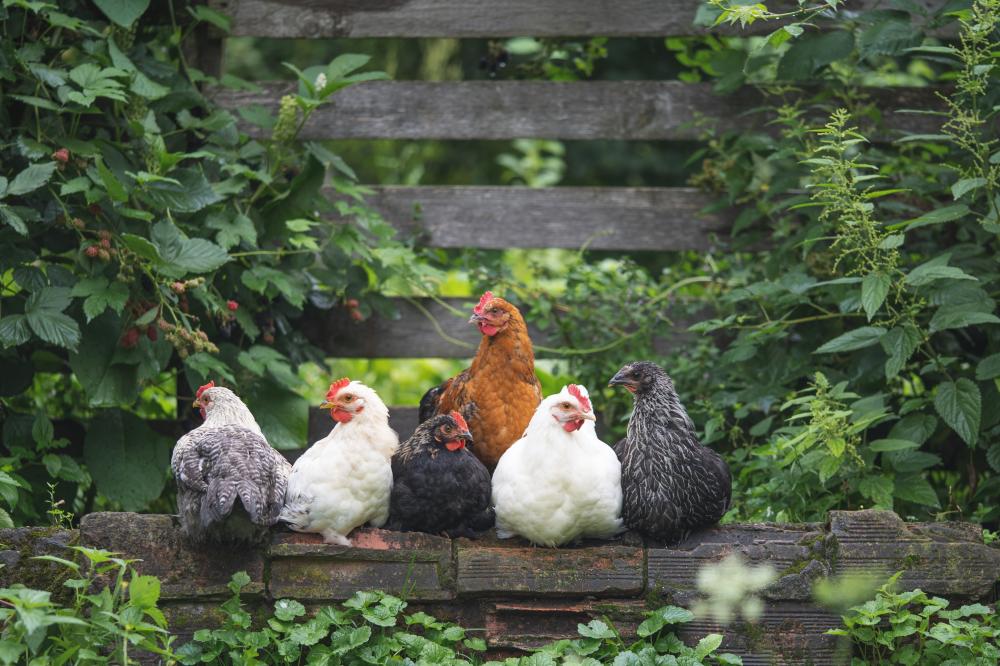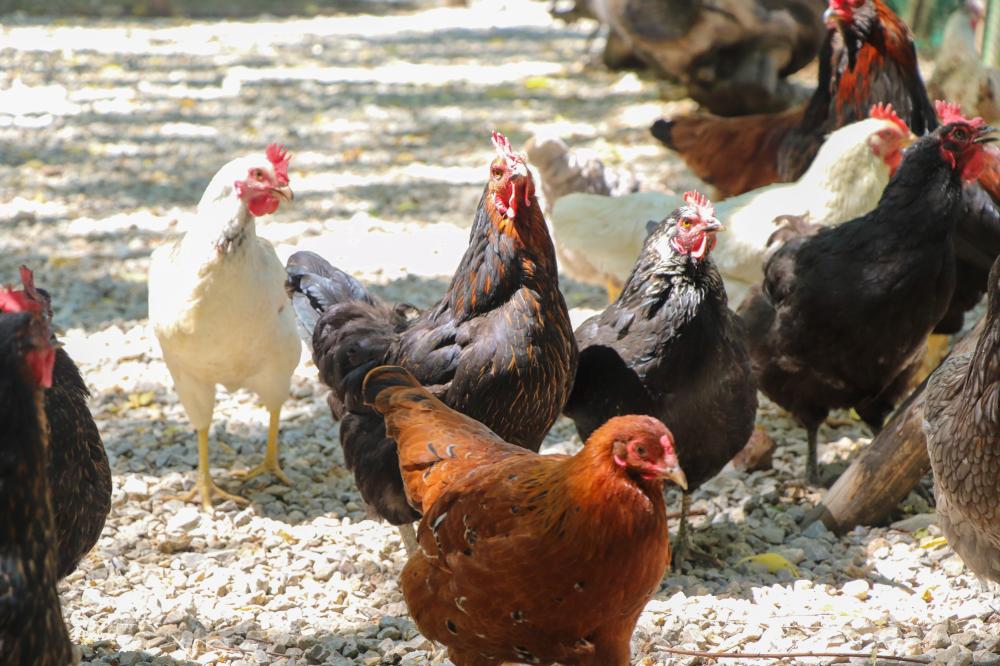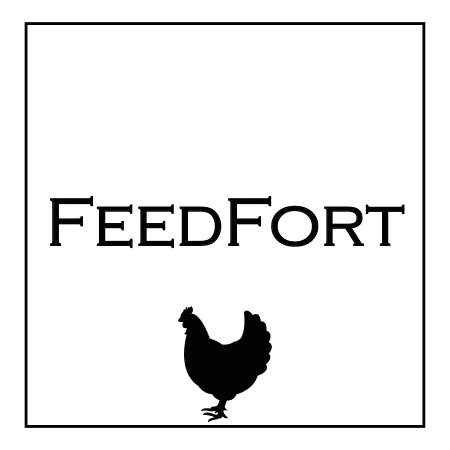Chicken Feeding Automation

Overview of Chicken Feeding Automation
With the rise of small and large-scale poultry farming, the need for efficient and secure feeding solutions has never been more pressing. Chicken Feeding Automation stands at the forefront of addressing this need, providing a seamless way to ensure that chickens have access to feed without the constant supervision of the farm owner. At FeedFort, our patent-pending automatic chicken feeder is designed with both the welfare of the chickens and the convenience of the owner in mind.
The incorporation of photocell technology allows our automated feeders to adapt to the changing light conditions, opening with the dawn and securely closing at dusk. This not only ensures that the feed is protected from rodents and other pests overnight but also aligns with the natural feeding patterns of the chickens.
Benefits of Automated Feeding Systems
The primary advantage of Chicken Feeding Automation is the significant reduction in the time and effort spent on manual feeding. By automating this daily task, poultry farmers can focus on other important aspects of farm management. Additionally, the secure design of our FeedFort feeders protects against rodents and pests, drastically reducing the risk of feed contamination and disease transmission within the flock.
Cost Savings:
- Reduction in feed waste through controlled dispensing.
- Decreased labor costs as a result of automation.
- Minimized risk of feed spoilage and pest infestation.
Improved Flock Health:
- Consistent feed availability supports regular growth and egg production.
- Reduced stress in poultry due to predictable feeding schedules.
- Lower risk of disease spread by keeping the feed secure and uncontaminated.
How It Works
The FeedFort automatic feeder utilizes advanced photocell technology to detect changes in natural light, automatically dispensing feed at dawn and securing it at dusk. This system is ingenously simple yet effective in maintaining a consistent feeding schedule for the chickens, aligning closely with their instinctual behaviors.
Made from durable American-made 5052 Aluminum, these feeders are not only resistant to rust but also tough enough to withstand the attempts of rodents and other pests to access the feed. The slow descent feature of the lid ensures that feed is dispensed gradually, minimizing spillage and maximizing feed use efficiency.
Setting Up Your Automatic Feeder
Installation of the FeedFort automatic chicken feeder is straightforward, requiring only a few simple steps to integrate it into your existing poultry management routine. Placement is flexible, as the unit is designed to operate efficiently in various environmental conditions, from open fields to covered coops.
Once in place, minimal adjustment is required. The feeder’s capacity allows for less frequent refills, making it a convenient solution for busy farmers. The initial setup process provides an excellent opportunity to observe and adjust the feeding quantities based on the specific needs of your flock.
Training Chickens to Use the Feeder
One might wonder about the ease of transition to an automated feeding system. Based on our experience at FeedFort and feedback from numerous customers, chickens adapt quickly to the new feeding method. Anecdotal evidence suggests that curiosity drives them to explore the feeder, and once the first few chickens begin using it, the rest follow suit.
Initial guidance can be provided through strategic placement of feed around and on the feeder. This draws the chickens to the unit and encourages them to explore further, eventually triggering the mechanism that opens the feed compartment.
Customizing the Feeding Schedule
One of the standout features of the FeedFort feeder is its ability to adapt to the specific operational hours of your farm. While the default setting aligns with natural light patterns, adjustments can be made to cater to unique farm schedules or to accommodate the seasonal changes in daylight hours.
This flexibility is a boon for farmers who may prefer to offer feed to their chickens at slightly different times due to environmental factors or personal preferences. The ease of customization ensures that the feeder not only improves operational efficiency but also fits seamlessly into the existing farm management practices.
Long-Term Benefits
Adopting Chicken Feeding Automation through the use of FeedFort’s automatic feeder is not just a short-term solution but a long-term investment in the health and productivity of your poultry farm. The immediate benefits, such as time savings and reduced feed waste, translate into significant cost savings over time. Equally important, the consistent and reliable access to feed promotes a healthy and stress-free environment for the chickens, leading to improved growth rates and egg production.
In the broader perspective, the adoption of such innovative solutions contributes to the sustainability of poultry farming by optimizing resource use and reducing the ecological footprint of farm operations. As we continue to innovate and refine our products at FeedFort, our goal remains to support our customers in achieving both their immediate and long-term farming objectives.
Testimonials and Case Studies
Our journey at FeedFort has been marked by the stories of countless farmers who have transformed their poultry management practices through the adoption of our automatic feeders. From small backyard operations to large commercial farms, the feedback has been overwhelmingly positive. Farmers report not only the tangible benefits of reduced feed waste and labor costs but also the intangible rewards of knowing their flock is well-fed and healthy.
One particularly compelling case study involves a commercial farm that was struggling with rodent infestation and feed spoilage. After switching to FeedFort feeders, they saw an immediate reduction in feed loss and an improvement in flock health, leading to an increase in their bottom-line profitability.
Conclusion
Chicken Feeding Automation represents a significant step forward in the evolution of poultry farming, offering benefits that extend beyond the immediate convenience of automated feed dispensing. At FeedFort, we are proud to be at the forefront of this movement, providing solutions that are not only practical and efficient but also aligned with the well-being of the chickens and the sustainability of farm operations. Embracing automation in feeding practices is not just about keeping up with the times; it’s about setting a new standard for excellence in poultry care and farm management.

How do I get my chickens to use an automatic feeder?
Introducing chickens to an automatic feeder like ours at FeedFort is surprisingly simple, thanks to their natural curiosity. To encourage them to use the feeder, we recommend placing some feed around and on the feeder to draw their attention. Chickens are inherently attracted to new sources of feed, and once a few brave souls start pecking at the feed in and around the feeder, the rest will quickly catch on. Remember, the key is patience and a bit of strategic placement of the feed. Feel free to share your experiences or ask for tips in the comments below if you’re trying something different!
How does an automatic chicken feeder work?
At FeedFort, our automatic chicken feeder works on a beautifully simple principle. Utilizing advanced photocell technology, it detects the change in natural light levels to open at dawn and securely close at dusk. This not only aligns with the natural feeding pattern of chickens but also protects the feed from pests and rodents overnight. Built from durable 5052 Aluminum, our feeders are engineered to withstand attempts by rodents to access the feed, ensuring your chickens enjoy a fresh and uncontaminated supply every day. Has technology made your farming life easier in ways you didn’t expect? Let’s discuss the impact of innovation on poultry farming in the comments!
What is the best feeding method for chickens?
Finding the best feeding method for chickens depends largely on the specific needs of your flock and the resources at your disposal. However, automated feeding systems, like the ones we offer at FeedFort, represent a significant step forward. They provide a consistent, stress-free feeding routine that aligns with the chickens’ natural behaviors and promotes healthy growth and egg production. Automated feeders also significantly reduce waste and protect feed from contamination. Comparing this to traditional manual feeding, the benefits of automation in time savings, health, and cost-effectiveness become clear. How has switching feeding methods impacted your poultry’s health and productivity? Share your experiences below.
What is a standard automatic chicken feeder?
A standard automatic chicken feeder, like the models we design at FeedFort, incorporates a mechanism that automatically dispenses feed at set times or based on specific triggers, such as the level of natural light. Our FeedFort feeder, for instance, uses photocell technology to open and close, ensuring feed is available at dawn and protected by night. Made from high-quality American-made 5052 Aluminum, it’s built to last and keep pests at bay. What makes our feeder stand out is its ability to reduce feed waste and labor costs dramatically, proving to be an invaluable asset for both small-scale backyard farmers and large-scale poultry operations. Have you encountered any unique challenges with your automatic feeder? Let’s brainstorm solutions together below.
How do you maintain an automatic chicken feeder for optimal performance?
Maintaining an automatic chicken feeder like the ones we offer at FeedFort is key to ensuring long-term reliability and efficiency. Regular cleaning to remove dust, feed residues, and moisture is important to prevent mold and keep the feed fresh. It’s also crucial to check and adjust the settings periodically, especially when introducing new feed types or when there are changes in the flock’s size or feeding needs. Lastly, inspecting the feeder for wear and tear or damage, and making timely repairs or replacements, will help maintain its functionality. At FeedFort, we stand by the durability of our feeders, but we also encourage our customers to keep in touch about how their feeders are performing. Any maintenance tips or questions? Drop them in the comments below!
Resources
- Poultry Feed Efficiency – Penn State Extension – Learn about the feed efficiency of poultry and how it impacts farm management.
- Avian Health – USDA – Access information from the USDA on avian health to ensure your flock remains disease-free.
- Poultry Feed Formulation – University of Minnesota Extension – Understand the important considerations for formulating feed for poultry.

